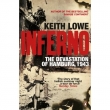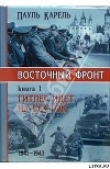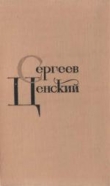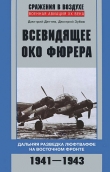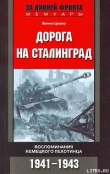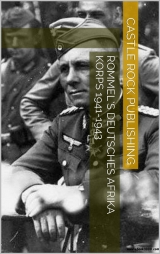
Текст книги "Rommel's Deutsches Afrika Korps 1941-1943"
Автор книги: Автор Неизвестен
Жанры:
История
,сообщить о нарушении
Текущая страница: 13 (всего у книги 19 страниц)
The British plan foresaw that the main thrusts would be an advance to the line Mateur—Tebourba by the two infantry brigades of 78th Division supported by the mobile and mainly armoured Blade Force. To divert German attention from these main thrusts there were to be diversionary operations; the one a commando assault from the sea and the other an air drop on the southern flank.
The 36th Brigade of 78th Division was to advance from Djebel Abiod towards Mateur and then press onwards to seize a junction on the Mateur-Bizerta road. Possession of this would cut the" route between those towns and would form a base line for the final advance northwards to Bizerta. The 11th Brigade assault was to move upon and through Medjez el Bab and then strike north-eastwards towards Tebourba. Blade Force would be the mobile centre column protecting the left flank of 11th Brigade and be advancing upon Sid: Nsir. At that place it would turn due east, seize the Chouigui pass, debouch on to the plain at El Bathan and the aerodrome at Djedeida. Once Mateur and Tebourba had been taken the advance upon Tunis could begin.
The assault by 11th Brigade opened disastrously. Defending Medjez el Bab were three companies of Koch's 3rd Battalion, an Italian anti-tank gun detachment, a pair of 8.8cm guns, and some armoured fighting vehicles belonging to 190th Panzer Battalion. Signs of the impending British offensive had not been lacking and the Axis defenders stood ready for battle. The British pincer which struck from the north was made up of the 2nd Battalion The Lancashire Fusiliers and this unit made a night assault upon the town. In the bright moonlight Koch's men saw the extended line of British Fusiliers moving across the open plain and opened fire with terrible effect. The German paratroops had a higher than usual establishment of mortars and light machine guns which, when mounted on tripods, were converted into medium machine guns with a greater range. These weapons were also being handled by men who had years of training and combat experience and in the shon days of preparation had calculated the distances of objectives to a foot. The first mortar bombs of the barrage struck the Fusilier's battalion headquarters as it moved, with the rifle companies, across the plain to the west of Medjez and in the minutes which followed and under a storm of bullets and shrapnel, the Fusiliers were driven to ground.
The British advance was halted. There could be neither a going forward nor a going back and Koch's paratroopers made the British battalion suffer all through the night. A German barrage at dawn brought more casualities, but then the Fusiliers moved forward to the Medjerda river, determined to force a victory. The machine guns sited to fire along and across the shallow river caught the British infantry as they struggled to climb the crumbling banks and blasted them back across the Medjerda. The German paratroop commander seeing that the initiative now lay with him put in a sudden, determined counter-attack, which caught the Lancashire Fusiliers as they were preparing to withdraw to the start line from which they had begun the advance, and caused a certain amount of confusion. Later in the afternoon the German paras showed their potency when they attacked a British force at Djebel Bou Mouss, known to the British as Grenadier Hill, and located to the south-west of Medjez.
The threat of being outflanked by United States armoured forces nearing Goubellat forced Koch to evacuate Medjez el Bab and, covered by a rearguard furnished from men of No 10 Company, the Germans left the town after blowing the bridge. The British moved forward and occupied the deserted town. The paras then took up positions on both sides of the main highway to the west of Massicault. Near Bou Arada the 1st Battalion of Koch's regiment had been fighting against an Allied tank thrust and in short but bitter engagements had destroyed three armoured vehicles. The Allied attack was deflected and the armoured column turned back.
An American tank battalion, part of Blade Force, and numbering more than a hundred tanks in addition to other vehicles, moved out to reconnoitre the ground across which llth Brigade would progress after its capture of Medjez el Bab. The armoured battalion's line of advance lay through the Chouigui pass and to the west of that feature, just after noon, the United States armoured unit struck No 3 Company of Witzig's battalion. This group, which had formed the reserve for Brioch's division, had been reinforced with a troop of Italian SP anti-tank guns and sent up the line to hold the Allied assault.
In the face of superior numbers Witzig's men withdrew into the shelter of a walled farm which they defended tenaciously and held at bay the repeated assaults of the American tank men. With bursts of machine gun fire and sorties armed with explosive charges the German para-engineers obstructed the American advance and, having then fulfilled their purpose, slipped away in the hours of darkness.
During the morning of 26th a virile thrust by the American tank battalion brought a new crisis for Nehring for during their advance 'C' Company of the United States tank battalion caught the aerodrome at Djedeida unguarded and in a short fierce fire-fight destroyed 17 of the aircraft drawn up there. The news that the Allied armoured spearheads were only 10 miles from the capital alarmed Nehring. He had viewed with concern over the period of the past few weeks the struggle of his men to hold back the furious assaults of the Allies and this new alarm confirmed in his mind the intention he already had; he would withdraw the perimeter line back towards Tunis and Bizerta. By shortening the line thus, he could perhaps have a chance to regroup his forces, to form a more solid line and maybe even build a proper reserve. All along the line of the German bridgeheads the orders to disengage went out and small, silent groups of men left the positions which they had fought for and defended with such tenacity and moved eastwards back towards the principal cities.
The German defensive line, if it can be called that, extended at that time from a point north of Djebel Abiod to the area of Mateur, along the Mateur-Djedeida road to St Cyprien and from thence to a point south of Hamman Lif. To the south of the perimeter there were detachments either guarding or extensively patrolling along the open southern flank.
It was imperative that the United States tank thrust around Djedeida be halted and the Luftwaffe was called upon to support the ground forces by air attacks upon the Allied spearhead. Nine separate attacks went in, and destroyed some vehicles but the others continued their advance. It seemed as if Allied boldness might yet win the race for Tunis, but as the American armoured fighting vehicles thundered along the western road they came into the defence sector which had been specially created to guard the approaches to the city. The backbone of this was the two 8.8cm guns which Nehring had himself sited.
The Luftwaffe gun crews held their fire as the American column came closer and still closer. At almost point blank range the gunners opened fire and the crack of the first shot was barely heard in a greater detonation as the lead tank blew up, then a second burst into flames, a third slewed round with its track destroyed, another and then another; the gunners firing as fast as they could load until six machines had been put out of action. In the face of such a weapon as the 8.8 with its high rate of fire and its great powers of penetration, the American tank unit could make no further advance. The American column turned and withdrew upon Djedeida.
During the early morning of 26th, Witzig's Group, which had received reinforcements of No 3 Company of the Tunis Field Battalion and a squadron of tanks from 190th Panzer Battalion, resumed its march upon Tebourba. To carry out this advance it had to cross ground in which American tank columns were ranging. Then followed the first battle between German and American armoured forces.
The German Panzer IVs were fitted with the long 7.5cm high velocity gun and the Panzer IIIs with the 5cm weapon. The United States tanks had smaller cannon but their force was not only numerically stronger but was in better tactical position. The Panzer IVs advanced in a shallow wedge formation with the lighter armed Panzer Ills in the intervals. Firing rapidly the panzer squadron advanced towards a company of American self-propelled guns but it had fallen into a trap and was taken in flank and from the rear by US tank groups hidden in hull-down positions. The United States tank crews fired at close range and to such good effect that all the Panzer IVs and several of the Panzer IIIs were knocked out within minutes. The remnants of the armoured elements of Witzig's command pulled back to the farmhouse which his para-engineers had defended so tenaciously.
Now that Medjez el Bab was in British hands Tebourba had become the next most important stepping stone in the advance by 11th Brigade and it fell to 1st Battalion the East Surrey Regiment at dawn on 27 November. The concentration of Blade Force armour in and around Tebourba and the Chouigui pass, some 4 miles north of the village, convinced Nehring that this was the area and the direction from which the decisive Allied assault would be made. The possession of Tebourba would determine whether Tunis would fall or would be held. Nehring sent in a series of armoured probing attacks to ascertain the Allied strength in the area. Two columns of infantry and tanks attacked; one from the north-east and the second from the east. Small, bitter battles were fought in the olive groves which are laid out all around the town.
Early in the morning of 27 November the East Surreys in the perimeter around Tebourba were attacked by a German tank column, Battle Group Lu'der. Leading the assault were two of the giant Panzer VI Tigers, which had been rushed over to Tunisia. A dozen or so other tanks completed the armoured group. The first wave of panzers rolled over the forward British infantry positions but then came under fire from a battery of British 25-pounder guns positioned behind the East Surreys. The tank gun versus field gun duel was short and predictable: all 8 guns of the British battery were knocked out and lay smashed and silent. But dotting the rolling countryside were 10 tanks of Battle Group Lüder, completely destroyed. At last light the German panzer column drew off down the road to Djedeida taking a further four damaged vehicles with it.
During the night of 27/28 November both sides improved their tactical positions or regrouped their forces. The British commander intended to capture Djedeida and then to move 11th Brigade in a north-westerly direction to cover the flank of the Allied force which would then thrust for Tunis. The elaborate plan for 36th Brigade to attack Djebel Abiod was not required for Witzig and his men had slipped away in the night and had moved back upon Bizerta. They had dug positions in the area of Jefna on the road to Mateur and stood there waiting.
On the morning of 28 November the 36th Brigade column led by the carrier platoon of 8th Battalion the Argyll and Sutherland Highlanders advanced into the valley between the Djebel el Azag, known to the British as Green Hill, and the Djebel el Ajred, known as Bald Hill. Hidden in position on the slopes above the valley lay the men of Witzig's para-engineers and a pair of Italian SP guns. The German fire discipline was excellent and no shot was fired as the rifle companies of the Argylls moved into the valley. The Scots opened fire at 13.45hrs with machine guns and mortars upon suspected German positions but still no fire was returned. Emboldened by this lack of opposition the Argylls moved into the valley and Witzig gave the command to his men to open fire. A single shot from an anti-aircraft gun opened what became a hurricane of fire upon the Scots. The Italian SPs' first round smashed the last carrier on the track and the ground on either side of the track was mined. There could be no advance in the face of the fire which was being poured down upon the British nor could they withdraw. Within minutes eight carriers were smashed and blazing as they were picked off one after the other. Nor did the screen of riflemen forming the Argyll's advanced guard escape the fury of the German fire wfiich smashed into the killing ground, and only six men of the leading company reached the British lines. Further assaults or succeeding days by 6th Royal West Kents and No 6 Commando were alsc beaten back with heavy loss to the attackers. Exhausted by their fruitless efforts the men of 36th Brigade could make no further effort and fighting diec down on this sector,
German contrattack
To divert Nehring's attention from the main thrust, to compel him to split his force and thus to ease the British assault, General Evelegh ordered a para drop by 2nd Battalion upon Depienne on the southern flank of the advance. The British drop would capture the Luftwaffe's advanced air base at Oudns after which it was to join up with Blade Force. Meanwhile 1st Commando on the sea flank would make an assault landing near Sidi el Moudjad, behind the back of the German force which was opposing the advance of 36th Brigade.
The sea-borne assault was betrayed to the Germans by local Arabs anc Nehring, with his forces committed to holding 78th Division's thrust, had nc reserve upon which he could immediately draw. The German troops were sc thin on the ground that only 30 men garrisoned Tunis town. Nehring's only solution was to use the men who were arriving by air. As the aircraft landec the soldiers were hastily embussed and taken to Cap Serrat, the area in which the commandoes had debarked. In the densely wooded hills, which are a feature of that coastal sector, the newly arrived German troops and the British elite troops fought desperate hide-and-seek battles in the darkness of the trees. Commando pressure pushed towards the Sidi Salah crossroads only IS miles west of Bizerta, but fresh German troops were flung into the battle anc the commandoes were compelled to re-embark.
The British para drop was also unlucky. The airfield objective was found to be abandoned and, in the absence of a relief force, the British paras preparec to make their way back to the Allied lines. But their move was intercepted by men of Koch's 1st Battalion as well as by the German armoured car reconnaissance company. Although they were harried, the British were not beaten and when the German paratroops, supported by tanks and armoured cars, made a frontal assault upon them, the British parachute troops destroyed the lead panzer. The Germans, riding into battle on the outside of the armoured vehicles, leaped off and formed action groups, moving forward under the protection of the armoured cars. In hand-to-hand fighting the British 'red devils' and the German 'green devils' of Koch's regiment fought a running battle which lasted until 2 December.
When the British battalion reached the safety of its own lines a count showed that it had sustained over 200 casualties.
As neither the paratroop drop nor the assault from the sea had achieved any reduction in the German opposition, General Evelegh ordered a temporary halt to allow his offensive to regain breath before making the final attack. But his hope of a pause was to be thwarted by the German offensive which was launched by the aggressive commander of 10th Panzer Division, General Fischer.
Although the British and the Americans had been carrying out plans to finish the campaign, it must not be assumed that the initiative had been only with the Allies. The Germans, too, had been very active. The greatest number of troops in their bridgeheads, particularly in the early weeks of the fighting, had been paratroops. These men were among the elite of the German forces and were capable, aggressive, and skilled. On the northern sector their idea of aggressive defence took the form of deep penetration into the Allied rear areas. Witzig's men had the task of delaying the advance of 36th Brigade and had decided that raids behind the British front and demolitions on the supply routes to the forward positions would have a greater effect than a straightforward blocking action. Night after night, often in pouring rain, the patrols went out slipping into the darkness to mine roads, to demolish bridges, and to intercept convoys of lorries, or even single vehicles well behind the British front line. But this was not enough for Witzig. Deep penetration to halt the convoys of supplies and reinforcements coming to Algeria would help to strangle the Allied supply routes and he increased the radius of his commando-type operations by para drops. In a short series of night jumps the German para-engineers landed far in the hinterland of the Allied armies demolishing and mining, causing confusion and alarm to the men on the ground and to their commanders alike.
The men of the para-engineers were all-round specialists and professionals. To cover the weakness in men and further to delay the Allied advance, they laid mine-fields covering every sensitive area, particularly the approaches to those defiles in the hills through which assaults must come. Because of the shortage of real mines many of the fields were sewn, either wholly or in part, with dummies and further to increase the difficulty of lifting them, sophisticated anti-handling devices were fitted.
It can now be appreciated that as a result of the build-up of troops, Nehring had been able to form a small infantry and panzer reserve. No longer was the military situation so desperate that it was the case of having to plug gaps with newly debarked troops. Now their placement and replacement could be carried out in a more regular manner than had been possible heretofore. With no real divisional organisation, for as yet no complete division had arrived in Tunisia, there was still a need for battle groups, those ad hoc formations, in the construction of use of which the Germans were masters. With this reserve of men and armour in hand, Nehring could make plans and he found himself faced with the choice of two very risky alternatives. Either he could use his new panzer force defensively, that is wait until the Allies were strong enough to beat him, or he could act aggressively and throw it against the Allied force around Tebourba, and risk losing it at the first throw.
His mind was made up for him by an order from Kesselring to carry out an attack. The Supreme Commander South was convinced that the Allies were still too weak to make their final thrust and was also critical of Nehring's precipitate retreat. An offensive was ordered to regain the ground which had been lost.
To command the troops in the forthcoming offensive Nehring chose Fischer, commander of 10th Panzer Division, whose unit's advanced party had arrived in Tunisia and who had taken over the responsibility for the defence of Tunis West. Due to Allied air raids the unloading of I Oth Panzer's vehicles took three days but by 30 November two panzer companies together with other troops, were in position around Protville ready to deal with any Allied thrust aimed at Tunis or Bizerta. The units which had arrived in Africa included 80 Panzer Ills from 7th Regiment and these were formed into two companies. In addition, two companies of a motor cycle battalion had arrived, followed by elements of an anti-tank battalion, one company of which had its 7.62cm guns mounted as SP. Among the essential vehicles which had not arrived were those of the divisional command. Fischer had to be content with a scout car without wireless as his command vehicle. The rest of his headquarters' group was mounted in motor cycle combinations.
Nehring's order to Fischer was simple and brief. 'You will attack and destroy the enemy troops in and around Tebourba', and in accordance with his instructions Fischer moved his command during the night of 30th to a point north-east of that small town and made ready for battle. Nehring then withdrew 5th Para from the line and posted it to El Bathan, south of Tebourba and gave Fischer units from other battle groups as well as four infantry replacement battalions. The 10th panzer commander realised that as he was weaker than his enemy he would have to defeat the Allies by cutting their retreat and stopping reinforcements from reaching them. These reinforcements and supplies had to come through two passes. The road from Medjez to Tebourba ran through one, the second pass being the Chougui, through which ran the road from Beja to Sidi Nsir.
If the Germans could capture these passes – and the lie of the land favoured them in this enterprise – they could block any attempt by the Allies to break the German ring and could then go on to defeat the enemy forces one by one.
Fischer's plan proposed an encirclement attack from three sides to pin the Allies against the river and the hills. The Allied positions were roughly triangular in shape with a mainly infantry force to the east and to the southeast. The armour belonging to Blade Force held the apex of the triangle at the Chouigui pass.
Battle Group Liider was located some 3 miles north of the pass and Fischer armed it with a company of 20 tanks, 3 field guns, and a company of infantry. The task of this group was to block the road from the Chouigui pass. On the left flank of Battle Group Liider, was Battle Group Hudel, the strongest of the four battle groups. This had two companies of tanks under command, numbering perhaps 40 vehicles, two companies of anti-tank guns, and a company of infantry. The task of this force would be to destroy the Allied armour by enticing the tanks on to an anti-tank gun screen or by ambushing them. This group would move from the position it held about 5 miles to the north-east of the pass and would converge to form a wedge with the Liider Group. Together their task would be to attack Tebourba from the west or else to block the Gap at that place. The seven companies of Battle Group Koch's paratroops, together with three companies of infantry, a German and an Italian anti-tank gun company, and two field guns, as well as a bicycle platoon of para-engineers had a holding role and were to advance north-westwards towards the Gap cutting off the Allied forces from their escape route. The fourth and final battle group, Djedeida, was to act as a reserve for the first part of the attack. Once the Chouigui pass had been penetrated this group would press westwards, driving the British infantry from their positions on the ridges west of the village.
To carry out its part in the attack, the Battle Group had under command a company of paratroops, two companies of infantry, two anti-tank companies, 18 guns of 2cm calibre, a motor cycle engineer platoon, a battery of 35.5cm SP guns, 2 Panzer Ills, 2 Panzer VI’s, and several 8.8cm guns.
There was little time for adequate planning or accurate reconnaissance to be undertaken and to overcome the problems raised by the lack of signals equipment Fischer arranged for motor cycle couriers to bear messages. The Tiger tanks, too, presented difficulties for they had been sent only for testing under active service conditions and had, therefore, to be given to the battle group with the least difficult task – Medjeida Group. D-Day for the operation was 1 December and General Fischer expressed his intention of leading the attack in person.
Allied observers on the hills around the Chouigui pass would have seen in the bright light of a December morning, two columns of tanks heading towards them. As the panzer columns came within range they took up battle formation – in each case a shallow wedge, a tactic which allowed each gunner a good field of fire. The wide but shallow wave swept down upon the Allied tank forces at the mouth of the pass. At long range the panzer cannon openec fire and smoothly, efficiently, and destructively the German armour smashed at Blade Force overrunning some part of it and dispersing the remainder towards the Tebourba Gap.
A British counter-attack was certain to come in and in anticipation of tnis a troop of Panzer Ills was concealed under olive trees in one of the extensive orchards which dotted the area. From another olive grove the tanks of 17/21 st Lancers broke cover moving forward in a counter-thrust but as these passed the hidden Panzer Ills they were taken "in flank. Within minutes five of the Lancers' tanks had been destroyed. The others withdrew. The German infantry component was brought in personnel carriers more than halfway up one djebel – marked on the maps as Hill 104 – were quickly debussed, and then raced for the summit of the feature from which they fired upon the columns of Allied soft-skinned vehicles which were already being withdrawn through the Gap. The German tank wedge was thrusting strongly for the main road when it came under Allied artillery fire skilfully directed by British and American gunner observers. The Allied fire halted the Lu'der and Hudel Groups north of the road. The attack on that sector was stopped.
Fischer then changed the direction of his offensive and brought up the Djedeida Group, leading this into the assault in person. Shortly after 14:00hrs the giant Panzer VIs led the German armoured column westwards along the road to Tebourba. In the leading Tiger, Captain von Nolde searched the area ahead of his column for the American tanks which had been reported. There they were, some distance ahead heading down the road towards his group. The 16-foot long, 8.8cm gun on Nolde's tank swung, aimed, and fired. High velocity shells struck and destroyed the American vehicles blowing off turrets and tracks and 'brewing up' others. Nolde swung his Tiger off the road and entered one side of an olive orchard, through which he passed to emerge on the other side ready to intercept and to cut off the American tanks as they withdrew down the road towards Tebourba. The American armour had been engaged and defeated but there was still the British infantry holding the high ground – the ridge above Djedeida. It must be stated at this point that the German replacement battalions were of very low calibre and, in fact, their poor showing was the subject of bitter comment in Fischer's report of the battle. The German Grenadiers' attacks, although heavy, were not pushed home with vigour and determination and were driven off with heavy losses. It is, however, fair to record that Colonel Buerker, in his report on the battle, stated that the infantry had had no previous experience of collaborating with tanks in an assault.
Now was the time for the troops of the southern pincer to come into action and small parties of Koch's men began to filter through the Allied defences making for high ground from which they would be able, at a later date, to fire with effect upon the retreating Allied columns. The short December day ended with a stalemate. To the north the early success against Blade Force armour had ended with the main thrust baulked and unable to move forward. To the east the important high ground was still in British hands but a tactical victory had been gained through the destruction of the American armour. To the south and south-west Koch's men were slipping their noose round the Allies, but the end was not yet in sight.
Both sides took the opportunity, during the night of 1/2 December, to improve their positions and to re-organise. New and fresh American armoured forces arrived in the area and relieved the shattered remnants of Blade Force. A small battle group from the Liider Group made a direct and vicious drive towards the Tebourba Gap but the attack faltered and died away in the Allied defensive fire. Then the German tactics changed; Fischer had decided upon a change of plan. He really had no need to move forward at all. If he could bleed the Allied tank strength then this would reduce its potency to a point where it would no longer be able to attain the objective of Tunis. All his battle groups needed to do were to weaken the Allies by continual assault and to confuse them by infiltration. Already there were signs that the Allied forces were becoming nervous as a result of the penetration of their lines by Koch's paratroops for these had, by now, almost completed the southern investment of Tebourba.
The situation on the Allied side was not as serious as the local commanders believed it to be. The Allied tank force was now grouped in and around the Tebourba area gathered into one compact mass, and, given the right leadership, might have driven the Germans back, for Fischer's men were not in a sound tactical situation. They were confined in a narrow area between Tebourba and the Gap and, therefore, subject to fire from all directions. Whichever way they turned to attack they could be fired at.[22] But the Allied tank commanders, and particularly those on the American side, had still not learned the basic lesson of armoured warfare – the use of mass and the need to conserve their machines by not wasting them in tank versus tank combats. The Allied tactic was still to engage in what were, in essence, cavalry charges and the first of a series of such assaults – isolated and unsupported – was launched against the Djedeida Group.
The United States tanks rolled eastwards towards the waiting panzers and at 11:00 hrs battle was joined. The American light tanks drove forward, thirty of them seeking to destroy the panzers and quite unaware that during the night a battery of 8.8cm guns had been sited on the flank of their advance. As the tanks poured through the orchards advancing towards the German positions, they met not only the fire from 7.5cm tank cannon but also a battering from the fast-firing 8.8s. Within 15 minutes, eight American tanks lay smashed or burning on the battlefield. Other American squadrons went in in futile assaults and their efforts, too, were smashed by the fire of the 8.8s and that of six Panzer IVs. The Allied armoured weapon was shattered against the steely panzer defence.


